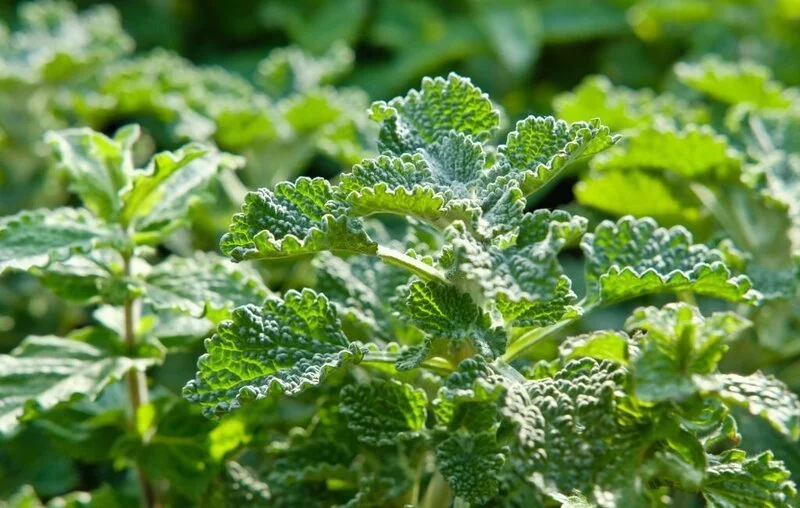Horehound – it might sound like a mythical creature from an epic fantasy tale, but it’s actually an herb with a history that stretches back thousands of years. Part of the mint family, horehound has been used in everything from herbal remedies to flavoring for candies and beverages. But, if you’re new to the world of horehound, you might be wondering, “What does horehound taste like?” Well, buckle up, flavor explorers, because we’re about to delve into the unique taste profile of this intriguing herb!
- To prepare as a tea, pour 8 oz. boiling water over 1-2 teaspoons of herb. Cover and steep for 5-10 minutes, strain and serve immediately.
- Botanical Name: Marrubium vulgare
- 1 pound bulk bag (16 ounces)
An Overview of Horehound’s Taste
Describing the taste of horehound can be a bit of a challenge. Why? Because it’s quite unlike anything else!
At first taste, horehound is unmistakably bitter. It’s a robust, earthy bitterness that some might find surprising, especially considering horehound’s family ties to mint. But wait, there’s more to horehound than meets the taste buds initially. After the initial bitterness subsides, subtle notes of mint and a certain sweetness sneak in, offering a complexity of flavor that is quite rare.
How horehound’s taste is perceived can also depend on its form. Fresh horehound leaves have a potent flavor, while dried horehound is slightly milder. When turned into horehound candy or lozenges, the bitterness is usually tempered with sugar or honey, giving it a sweet yet complex flavor profile that many people find intriguing and even comforting.
So, in essence, horehound’s taste is a fascinating journey of flavors, starting with a strong, earthy bitterness that eventually gives way to subtler, sweeter notes. It’s an adventure that your taste buds will certainly remember!
Factors Influencing Horehound’s Flavor
Like many plants, horehound’s unique taste isn’t a one-note song. Various factors can subtly change the flavor of this intriguing herb:
- Growing Conditions: Horehound, being a hardy plant, grows best in dry, poor soils, basking in the full sun. These tough conditions seem to accentuate its bitter-minty flavor profile.
- Age of the Plant: The age of the horehound plant can also influence its taste. Young leaves tend to be less bitter than the older ones, providing a slightly milder flavor.
- Preparation Methods: How you prepare horehound also plays a big role in its taste. When brewed into a tea, the bitterness softens, leaving a more minty, aromatic flavor. In contrast, when horehound is used to make candy, sugar or honey is added to counterbalance the herb’s natural bitterness.
It’s this ability to fluctuate in flavor that makes horehound such an interesting and versatile herb in culinary applications.
Common Uses of Horehound Based on Its Taste
Because of its distinctive flavor, horehound finds a variety of uses in the culinary world:
- Horehound Candy and Lozenges: Probably its most well-known use, horehound candy is a popular treat, especially for those who enjoy bitter-sweet flavors. The sugar helps balance horehound’s bitterness while highlighting its complexity.
- Herbal Teas: Horehound is often brewed into herbal teas, either on its own or blended with other herbs. The heat from the brewing process softens the bitterness and brings out a delightful minty aroma.
- Craft Beers and Bitters: Horehound’s potent flavor profile makes it an excellent addition to craft beers and cocktail bitters, adding an earthy, bitter twist.
- Cooking: While it’s not as common, adventurous chefs might experiment with horehound in their cooking, using it in marinades or sauces where its bitterness can complement other flavors.
So whether you’re savoring a piece of horehound candy or sipping on a soothing cup of horehound tea, this fascinating herb brings a unique flavor journey to the table. Ready to embark on this taste adventure? Your taste buds are in for a treat!
How to Balance Horehound’s Flavor in Dishes
While horehound’s distinct bitterness can be an acquired taste, there are ways to balance its flavor and make it more approachable:
- Sweeten Up: Adding a sweetener like honey, sugar, or even stevia can help counter horehound’s bitterness, as it does in horehound candies and lozenges.
- Blend with Other Herbs: Brewing horehound with milder herbs such as chamomile or peppermint can make for a more balanced tea.
- Cooking Companions: If using horehound in cooking, pairing it with strong, savory flavors, like garlic, rosemary, or thyme, can help mellow the bitterness while adding a unique twist to the dish.
Remember, it’s all about balance. A little experimentation can help you find the perfect harmony of flavors when cooking with horehound.
Conclusion
So, what does horehound taste like? It’s a rollercoaster of flavors, from a bold bitterness to a hint of sweetness and mint. And while its unique taste might be a bit surprising at first, it’s this distinctive flavor that makes horehound a fascinating herb to experiment with. Whether you’re brewing it into a comforting tea, stirring it into a savory dish, or enjoying it in a sweet treat, horehound offers a culinary adventure like no other. So why not take your taste buds on a journey and discover the intriguing flavor of horehound for yourself? You might just find a new favorite herb to play with in your kitchen.




